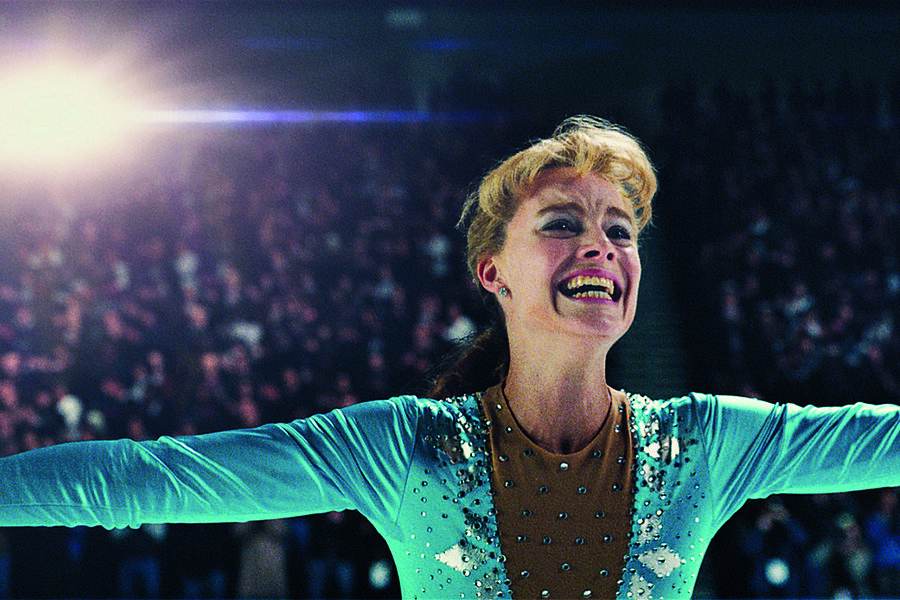‘I, Tonya’ skips Harding’s love of skating for fatuous irony
Loading...
“I, Tonya” is a screwy mockumentary about Tonya Harding, the first female skater to execute two triple axels in one competition. More famously, of course, she was at the center of the 1994 scandal in which fellow Olympics hopeful Nancy Kerrigan was kneecapped. Nancy barely makes an appearance in the film, but, starting with Tonya, the movie is chockablock with narrators, most of them unreliable, looking back in confessional talking-head interviews to the events leading up to the scandal and its aftermath in full, self-justifying cry.
Margot Robbie plays Tonya as an adult, and the actress clearly relishes the idea of working against her glam image. Raised in Portland, Ore., as self-described white trash, with a viperish single mother, LaVona Golden (Allison Janney), who ruthlessly promoted her career on the ice, Tonya in no way represented the wholesome image favored by the US Figure Skating organization. She skates to ZZ Top and wears a fur coat made of squirrel. She puts out her cigarettes with the blades of her skates. When she doesn’t like the way the judges rate her, she speeds over to them and offers up an expletive.
All of this is fun as far as it goes, but it doesn’t really go far enough. Directed by Craig Gillespie and written by Steven Rogers, the movie is all smirk and wink. Given the amount of emotional and physical abuse on the screen, which includes not only LaVona’s handiwork but also the beatings of Tonya’s husband, Jeff Gillooly (Sebastian Stan), the movie’s jaunty tone is something of a con job. It’s asking us to regard these actions as a species of entertainment.
What doesn’t really come through in all this is Tonya’s love of skating. As much of a rogue and a renegade as she was, she was genuinely gifted on the ice (as the end credits showing the real Tonya remind us). If the filmmakers had put more of that ardor into the movie, it might have been richer, but also less “cool.” It’s tough to show ardor when fatuous irony is the order of the day.
The film is periodically enlivened by some of the supporting players, including Paul Walter Hauser as Shawn Eckhardt, the supposed mastermind of the Kerrigan assault whom the movie depicts as a world-class schlub. He lives in his parents’ basement and fancies himself a secret international operative.
Janney’s performance has been much lauded, and it’s certainly a scene-stealer.
LaVona, in fact, recognizes this. In the script’s funniest moment, after a stretch in which she doesn’t appear in the movie, LaVona, talking right into the camera, complains that her story line has been lost. But LaVona is a one-note character like all the others; it’s just that her note is more nastily acerbic. She makes it clear to Tonya that all of her competitors are “the enemy.” Janney knows how to nail a line like few others in the business. It helps that, in this film, she has most of the best ones. Grade: B- (Rated R for pervasive language, violence, and some sexual content/nudity.)







